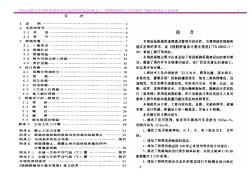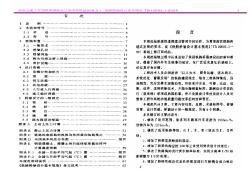1 General Provisions
2 Terms and Symbols
2.1 Terms
2.2 Symbols
3 Layout of Bridge and Culvert
3.1 General Requirements
3.2 Aperture of Bridge and Culvert
3.3 Structure of Bridge and Culvert
3.4 Bridge Approach and Tracks on the Bridge
3.5 Deck Layout and Ancillary Facilities
3.6 Maintenance and Repair Facilities
3.7 Structural Design and Safety Protection of Crossing Railway Bridge
3.8 Bridge Structure of Elevated Station
3.9 System Interface Design
4 Design Loads
4.1 Load Classification and Combination
4.2 Dead Loads
4.3 Live Loads
4.4 Other Loads
4.5 Service Passageway Loads and Railing Loads
4.6 Construction Loads
5 Design of Bridge and Culvert
5.1 General Requirements
5.2 Beam Bridge
5.3 Arch Bridge
5.4 Pierand Abutment
5.5 Culvert
5.6 Jacking Bridge and Culvert
Appendix A Active Earth Pressure Calculation
Appendix B Static Earth Pressure Calculation
Appendix C Distribution Diagram of Reference Wind Pressure in China
Appendix D Illustration of Calculating Temperature of Rectangular Section Members of Reinforced Concrete, Concrete and Stone Masonry
Appendix E.1 Average Air Temperature (oC) in January in China
Appendix E.2 Average Air Temperature (oC) in July in China
Words Used for Different Degrees of Strictness2100433B

 铁路桥涵设计基本规范TB10002D1-2005 (2)
铁路桥涵设计基本规范TB10002D1-2005 (2)

 铁路桥涵设计基本规范TB10002D1-2005
铁路桥涵设计基本规范TB10002D1-2005